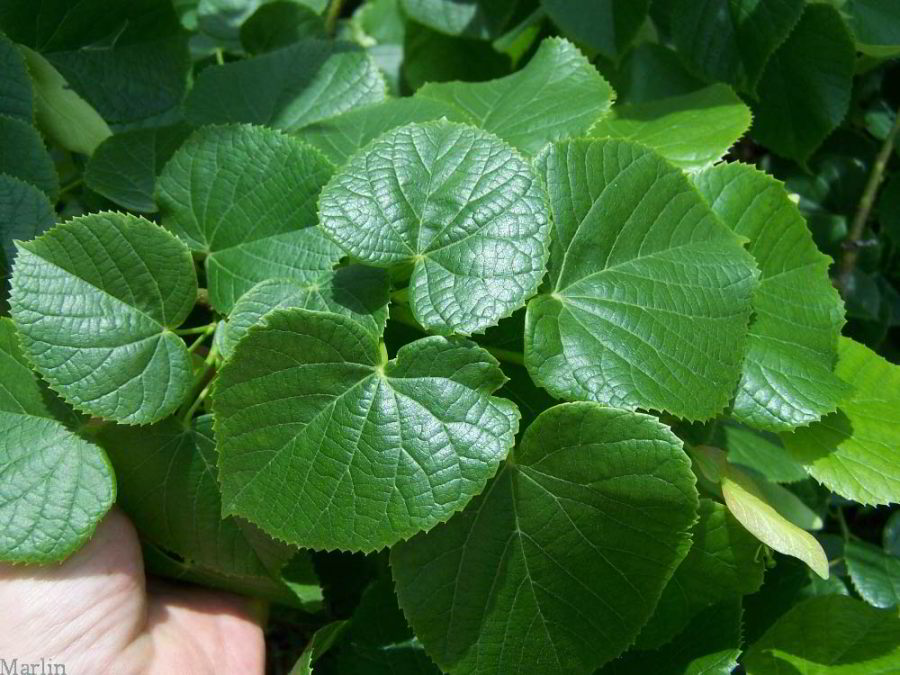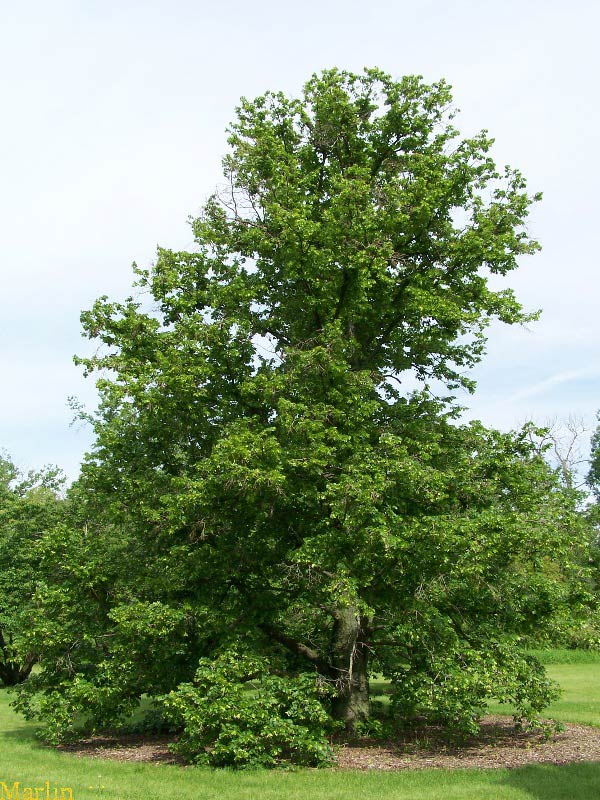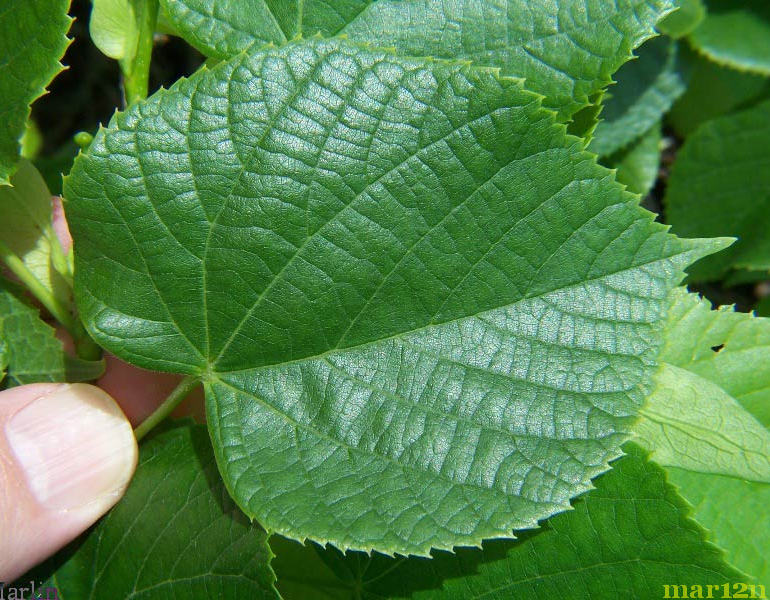Big-Leaf Linden – Tilia platyphyllos
 Asymmetrical heart-shaped leaflets indicative of linden species
Asymmetrical heart-shaped leaflets indicative of linden species
Tilia platyphyllos is a deciduous tree native to much of Europe. It is frequently planted as an ornamental tree in parks, or as a shade tree or a lawn tree. It has been naturalized throughout many places in North America, principally in New England and the Midwest, where it is commonly called Big-leaf Linden.

This big-leaf linden at The Morton Arboretum is nearly 80 years old
It is a narrowly domed tree with a moderate growth rate, and can reach a height of 100 ft. The reddish-brown young stems later develop dark gray bark with fine fissures and furrows. The branches spread upwards at wide angles. The twigs are reddish-green and slightly pubescent.
Although Tilia cordata is listed as the preferred medicinal species, T. platyphyllos is also used medicinally and somewhat interchangeably. The dried flowers are mildly sweet and sticky, and the fruit is somewhat sweet and mucilaginous. Linden tea has a pleasing taste, due to the aromatic volatile oil found in the flowers. The flowers, leaves, wood, and charcoal (obtained from the wood) are used for medicinal purposes. Active ingredients in the linden flowers include flavonoids (which act as antioxidants), volatile oils, and mucilaginous constituents (which soothe and reduce inflammation). The plant also contains tannins that can act as an astringent. [1]
References
1. Edward Gilman and Dennis Watson, USDA Forest Service ST-637 “Tilia cordata Littleleaf Linden”
2. NATIONAL AUDUBON SOCIETY, National Audubon Society Field Guide to North American Tree


